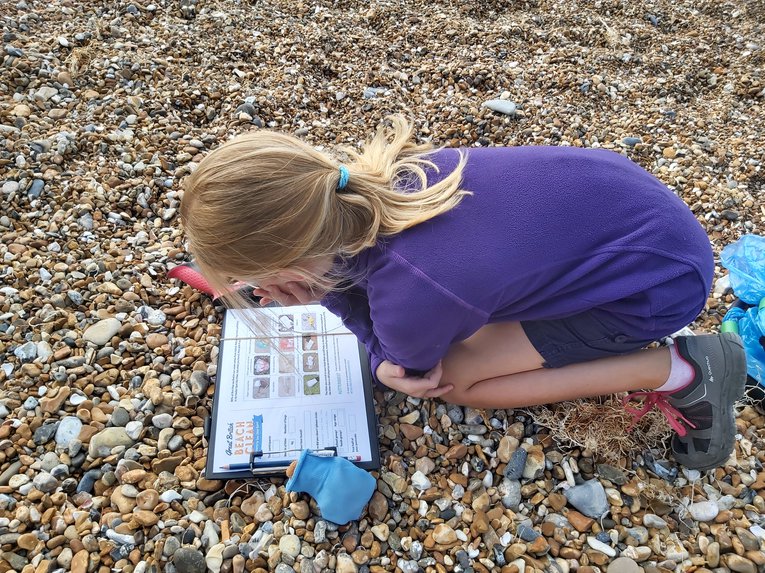
Beach cleans for schools and groups
Beach cleaning empowers children to do their bit for nature. By learning how their actions impact on our oceans we hope the next generation will be inspired to take up the fight against marine litter.
Take your learning outside
Taking part in a beach clean and survey is a great opportunity to connect with the ocean and learn about our environment. Time spent at the coast is great for health and wellbeing too, and the data you collect, by being scientists for the day, is vital in our fight for healthy seas. Marine litter is a problem that we can all play a part in solving, and what better way to start than with a day at the beach?
80
%
of litter on our beaches has made it there from land
30
%
of beach cleans last year found face masks and PPE
Ways to get involved
- Join our year-round Beachwatch programme, either by arranging your own event or taking part in an organised beach clean, held throughout the year.
- Take part in the Great British Beach Clean, our yearly flagship event held on the third week in September around the UK.
Organise your own beach clean
If you'd like to arrange your own event, register as an organiser and lead a beach clean for your group. We have all the resources you need to help you get set up. You could even adopt a beach to survey four times a year.

Credit: Kate Whitton
Join an organised event
Here's how to get involved in one of our Beachwatch beach cleans.
- Register for your chosen event, making sure you check the 'groups' box and give the number in your group.
- Arrange adult helpers. For health and safety reasons, we require the following minimum adult/pupil ratios:
- Under 7s, 1/6
- 7-11 years, 1/10
- 12-16 years, 1/15
- Talk to your group about the event. Go through the survey form and explain how a beach clean works.
- Before you arrive at the beach, discuss with your students the safety details below and general organisation for the day.
- Use an interactive map to locate your local beach. Examine the map, identifying key features (compass points, land, ocean) to orientate children. Zoom in to examine features children may be familiar with, or that identify this particular beach (pier, esplanade, amusements, etc). This is a good opportunity to emphasise safety aspects.
- Organise pupils into groups of four to five. Under 7s will need at least one adult per group. For younger children it may be easier for an adult to fill in the form, with pupils helping to collect the litter.
- Download your free copy of Teach on the Beach. It's packed with games, activities and advice for a fun-filled, educational day at the beach with your class or group.
Please note, young people remain the responsibility of their class teacher or group leader at all times.

Credit: Kate Whitton
What to bring
- Drinking water in a reusable bottle
- Suitable clothing, including closed shoes, rain coat and hat
- Sun cream
- If you are going to have a packed lunch, challenge the children to try and bring foods with as little plastic packaging as possible.
On the day
Be sure to arrive in good time as there will be an important safety briefing given by the organiser. Young people should be encouraged to listen carefully and adult leaders should reiterate key points as necessary. Identify the survey area and make it clear to your group that they must not leave this area without permission. Please also reiterate the importance of surveying each piece of litter as the data is vital to helping clean up our oceans.
Groups should work their way across the survey area collecting every man-made litter item that it is safe to pick up. Each item should be recorded on the survey form. The aim is to remove every bit of litter over the 100m stretch of beach. This will then be collected and weighed. Adults should work with groups to help them identify and survey litter accurately. Survey forms and equipment should be handed in at the end.

